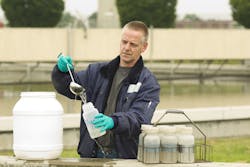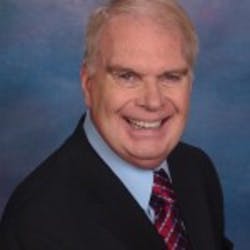Ask Dan, the Wastewater Wizard: Let’s concentrate on the concentrate
The qualities of a concentrated wastewater stream are unique, determined as they are by a combination of the wastewater’s source, the treatment it is subjected to and other complex parameters. The concentrate is the water containing the rejected impurities following treatment.
Regardless of the characteristics of the wastewater and treatment, the result will likely have a higher concentration of contaminants and a different variety of contaminants than the general waste stream. Obviously, this presents a challenge and a potential problem since introducing such a flow into the general waste stream would tend to degrade its overall quality.
Two things are important when working with concentrate: understanding its chemistry and capturing, storing and handling it separately from the general waste stream in almost all cases.
In fact, once a concentrated wastewater stream is identified, proceed as follows:
- Capture and store it in a separate storage or holding tank.
- Execute a unique dedicated wastewater treatment process.
- Follow a specific flow pattern for the concentrated wastewaters.
The process
First, analyze the contaminants and their concentrations in the wastewater. If the concentrate makeup will remain basically constant over time, a single stable analysis is sufficient, but if the contaminant concentration will vary, the amount of variability determines the frequency of analysis.
Once the analysis is complete, determine whether the concentrated wastewater can be pretreated and then processed or otherwise introduced into the general waste stream for treatment by a public utility. The alternative is treating the concentrated wastewater in a separate holding/storage tank, which requires separating solids from the clarified water in the tank.
After confirming that the clarified water satisfies wastewater treatment requirements, the clarified water can be introduced into the waste stream for additional wastewater treatment or directly discharged to the environment.
An example
In a recent project, a unique procedure was used to separate solids in the type of separate storage/holding tank mentioned above. During a two-year period, how we proceeded is described below.
We received approximately 2,000 gallons of concentrated wastewater in the separate/holding storage tank about once every month. It came from one of two sources in the plant, so it required analysis prior to executing treatment each time it was received.
After treatment, approximately 60 percent of the liquid volume remained on the top of the tank as clarified wastewater, and about 40 percent of the volume settled to the bottom of the tank as sludge, which consisted of solids and water.
Next, we analyzed the clarified wastewater to make sure it satisfied discharge permit limits and then blended it at 1 gallon per minute (gpm) into the general waste stream discharge of approximately 25 gpm. This blending approximated 4 percent of the volume and had essentially no impact on discharge treatment quality.
The remaining 40 percent of volume as sludge was processed through the plate and frame press to yield approximately 300 gallons of filtrate. It was then blended into a two-day plant discharge of approximately 50,000 gallons that essentially had no impact to discharge treatment quality.
End result
During this two-year project, multiple violations occurred, while the client failed to identify a treatment procedure. Knowing we would receive violation letters from the city, a more aggressive approach was needed to specify how this concentrated waste should be handled.
First, we asked a chemical supply representative to help identify the best use of wastewater treatment chemicals to treat this concentrated wastewater. A procedure was established to treat the concentrated wastewater in the separate storage/holding tank, allowing the solids to settle to the bottom and clarify the concentrated wastewater that remained at the top of the tank. The clarified wastewater could be analyzed to determine compliance with wastewater treatment requirements.
In the end, we saw satisfactory results for an extended number of sample events. This eliminated violations based on consistently compliant discharges.
Known in the industry as "Wastewater Dan," Dan Theobald, proprietor of Environmental Services, is a professional wastewater and safety consultant/trainer. He has more than 24 years of hands-on industry experience operating many variants of wastewater treatment processing units and is anxious to share his knowledge with others.

